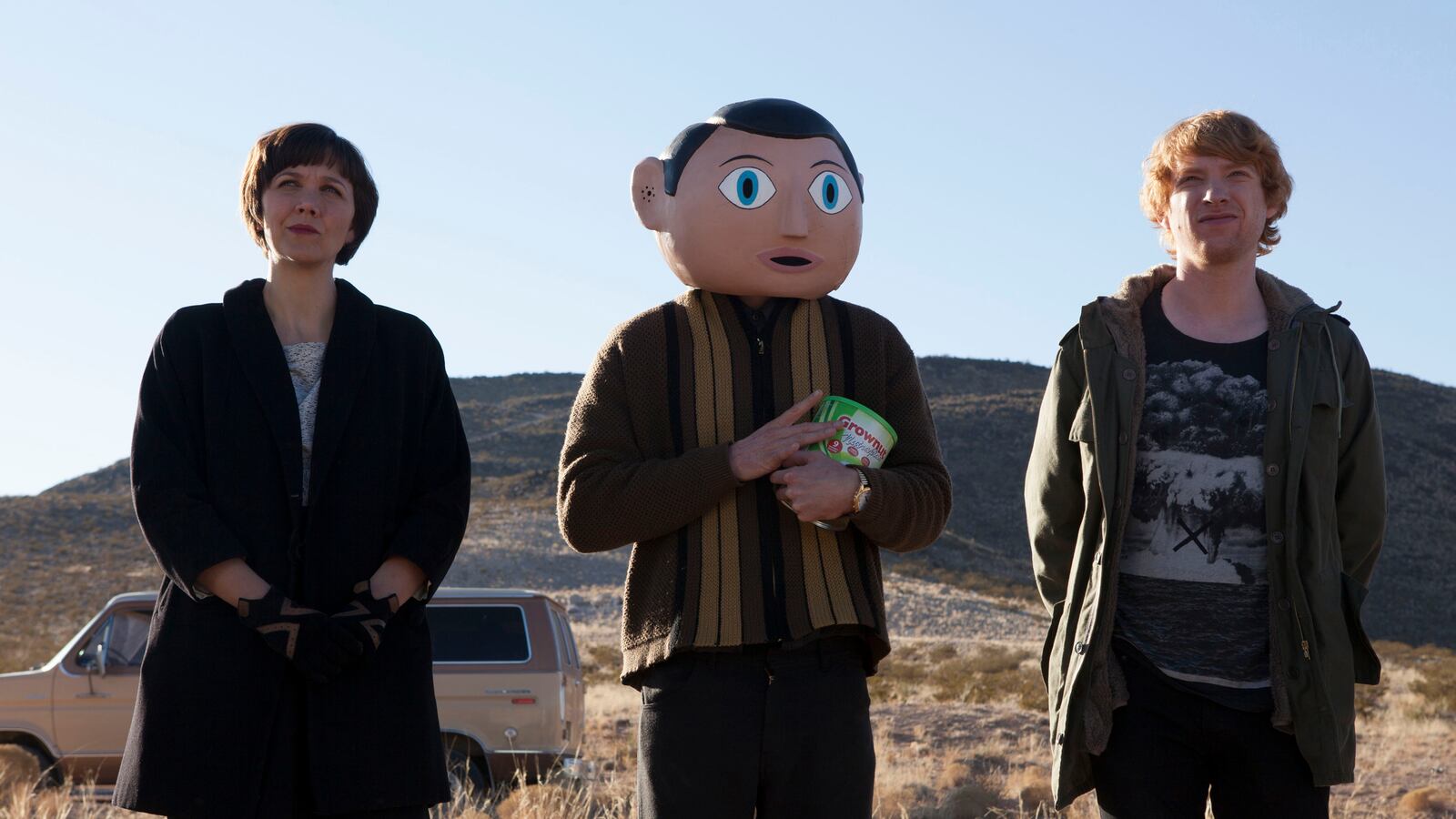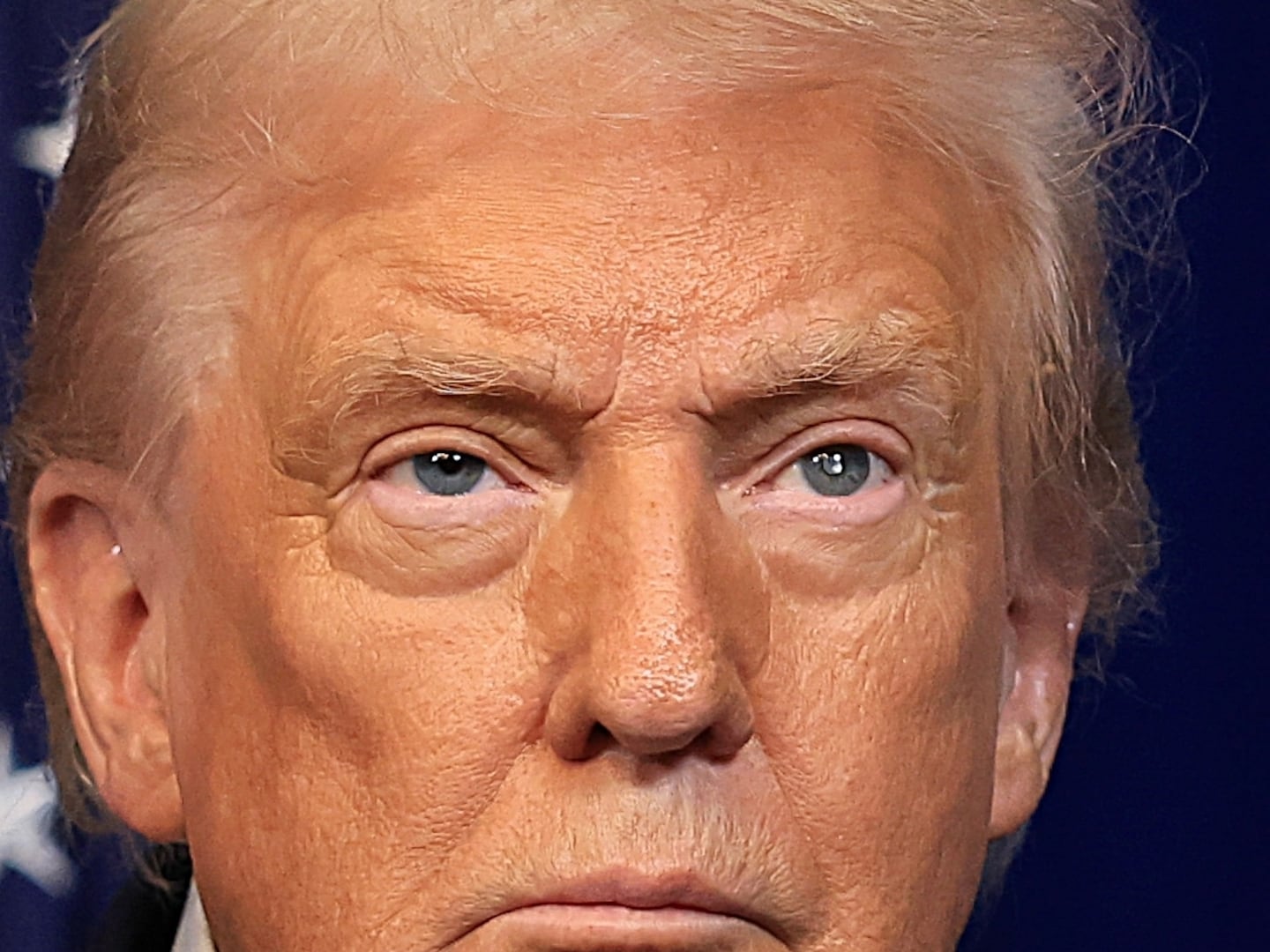There’s a scene in the film X-Men: First Class where electromagnetic puppeteer Erik Lensherr, played by Michael Fassbender, criticizes shape-shifter Raven Darkholme (Jennifer Lawrence) for feeling unwelcome in her own skin. “You want society to accept you,” he says, “but you can’t even accept yourself.”

In Lenny Abrahamson’s Frank, which made its debut at the 2014 Sundance Film Festival, Fassbender should have heeded his own advice. He plays the titular rocker, a 30-something curiosity who is never caught without his large, spherical papier-mâché head, which has an innocuous face painted over it like a Max Fleischer cartoon. He has an undescribed “medical condition,” and even feeds himself by sucking up a food substitute through a straw under his mask. Frank is the front man of a very avant-garde indie rock band (think Liars crossed with Blonde Redhead) that also includes his muse, Clara (Maggie Gyllenhaal), who sports a bowl cut and shoulder pads a la Karen O; their suicidal manager, Don (Scott McNairy), who “used to fuck mannequins”; aloof French bassist Baraque (Francois Civil); and drummer Nana (Carla Azar). This pack of weirdos forms the (unpronounceable) band Soronprfbs.
When their keyboardist tries to commit suicide, a 20-something English bloke named Jon (Domhnall Gleeson) is randomly recruited to join the gang. Jon is a poseur of the highest order; a suburban rich kid who still lives with his parents and wants to be a rock star, despite an incredible lack of musical talent. He’s emblematic of the oversharing generation—a self-absorbed whiner who treats his Twitter feed like an 11-year-old girl’s diary, replete with the lengthiest hashtags imaginable. Despite this, the genial, soft-spoken Frank takes a liking to Jon, and what begins as a backup keyboardist gig transforms into a bizarre, yearlong journey to record a debut album at a rented cabin on the Irish coast.
Clara is against the addition of Jon from the get-go. She sees him for the talentless, wanna-be-famous hanger-on that he is. “I’m going to stab you,” she later threatens, before having rowdy hate-sex with him in a hot tub. The French are wary of him too. But not Frank, the de facto ringleader of the group. Frank views Jon as a necessary foil to Clara, who wishes for the group to remain an underground act, creating their art on their own, as opposed to sharing it with the masses, whereas Jon is constantly uploading the band’s recording sessions to YouTube with the hope of it going viral and landing them their breakout gig.
Frank, meanwhile, is a man of few words—a foil to the wide-eyed, chatty Jon. He is a preternaturally gifted musician who can whip up catchy songs on just about anything, and is ridiculously cheery and optimistic. He often verbalizes his facial reactions to various stimuli, which almost always elicits a chuckle from the audience, e.g. “Smiling, unthreatening face!” It’s a curious role for Fassbender. Not only is it his first stab at comedy, but his expressive face, which we’re so used to seeing in various modes of teethy ferocity—from his violent O-face in Shame to the whipping scenes of 12 Years A Slave—remains hidden. It’s a very nuanced performance that’s all about the tenor of his voice and body language, and the hunky Irish actor couldn’t be more delightful.
The film’s screenwriter, Jon Ronson (The Men Who Stare At Goats), based the character of Frank on British musician and comedian Chris Sievey’s character, Frank Sidebottom—a 35-year-old aspiring pop star who dons a similar large, fiberglass head. Sievey made a number of appearances as his Sidebottom persona in 1980s Manchester, from appearances on BBC Radio 1 to performing in the Oh Blimey Big Band, which at one point counted Ronson as a member on keyboard.
Abrahamson’s Frank is an odd, but oddly beguiling film, with a tone that will seem discordant to many moviegoers. The first hour is a pure delight, as Jon, who narrates the film, struggles to become one with the band, and wrap his head around the oddness of Frank. At one point, he asks him why he wears the mask, and Frank largely brushes it off, describing the human face as being “like a science fiction film,” with its odd crevices, roughness, and indentations. And the cabin scenes are oftentimes hilarious, from Frank’s crazy rocker moves, gyrating and thrusting his body while they perform, to Clara’s exaggerated negativity. The film is simultaneously a satire on the ridiculousness of the avant-garde—at one point, Frank has the band record a plethora of outdoor sounds for the album, from splashing buckets of water to opening packets of aspirin—and the equally ridiculous desire to be famous. When Jon, through his social media efforts, lands the band a potentially game-changing gig at the South by Southwest (SXSW) music festival in Austin, Texas, these two contrasting ethos come to a head.
Frank, of course, is not for everybody. It zigs sometimes when you think it will zag, and the last half-hour sees it transform from a cheeky dark comedy into something far more tragic. But I have a sneaking suspicion that the film will gain a sizeable cult following among Fassbender and experimental film aficionados. Because where else will you see one of Hollywood’s most intense, uncompromising actors rocking out in a papier-mâché head?






